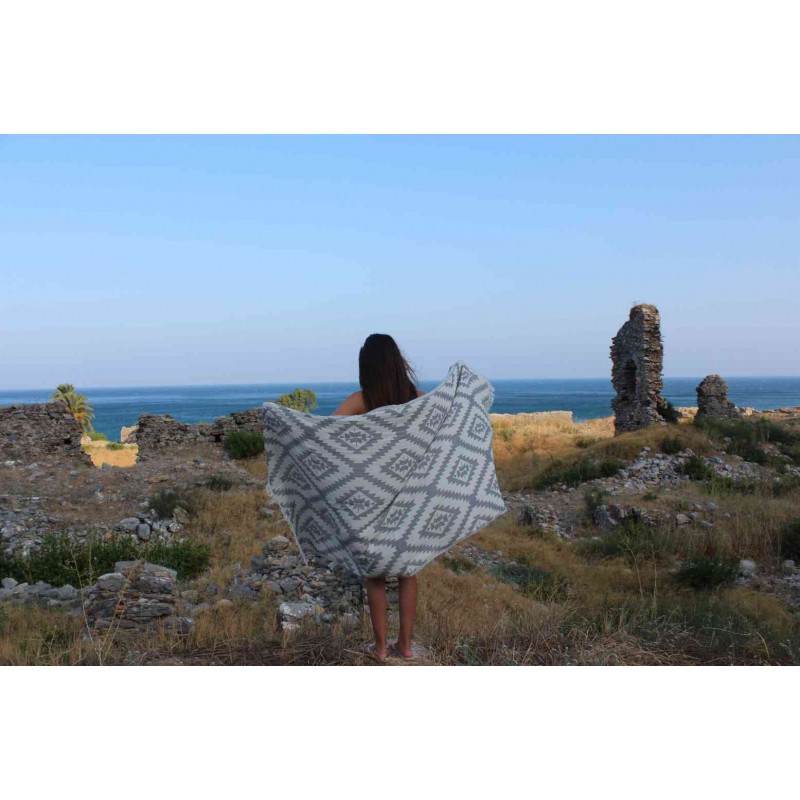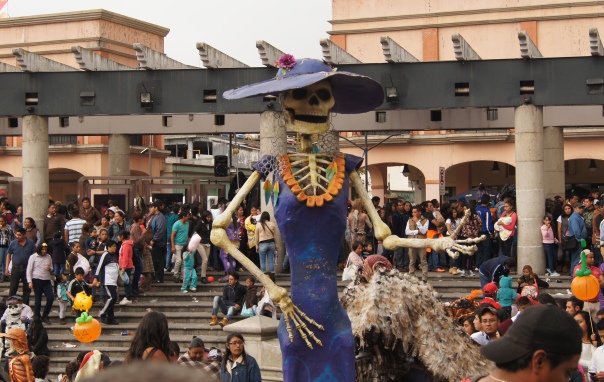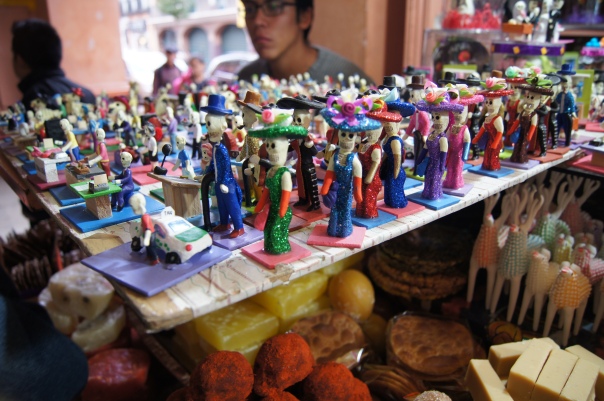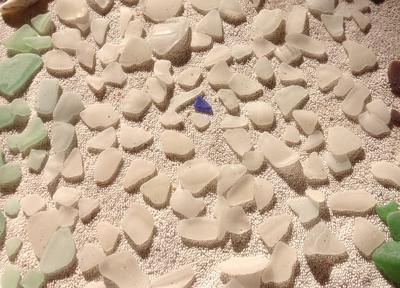What Winter?
Celebrating Sunrise, Sunset In Huatulco, Mexico
As I checked into my room at the Montecito Village Resort in Huatulco, Mexico, last winter, the friendly clerk showing me the amenities of the room announced that I would have a beautiful view of the sunrise.
“Don’t you mean sunset?” I gently corrected as I looked out at the Pacific Ocean from a gorgeous terra cotta tiled patio bigger than mine at home.
I’m not much of a sunrise person, instead preferring the view of my pillow at that hour. Celebrating the glorious rays of the sunset with a margarita in hand is more my style.
That’s why a winter getaway to Mexico’s Pacific coast sounded so perfect. Warm temperatures, pitchers of margaritas and front row seats to Pacific sunsets.
“No,” she smiled again. “We give you both — sunrises and sunsets.”
What a deal!
Such a destination requires a bit of a geography lesson. Huatulco is in the southern Mexican state of Oaxaca where the Central American coastline begins to run east-west rather than north/south.
Nine pristine bays in the Huatulco region draw in the tranquil Pacific with white sand beaches on three sides. One of the nine is Santa Cruz Bay, a popular port of call for cruise ships. Yet about four bays further south and east is Bahia Conejas, the last of the bays. A lush 12-acre peninsula jutting south into the Pacific forms the easterly edge. This is where you find Montecito Village and the reason why ocean sunrises and sunsets are possible.
In reality, the setting sun is partially blocked by the Sierra Madre mountains, yet its colorful rays splash across the ocean in a kaleidoscopic dance made all the more intriguing by an appropriate adult beverage in hand.
In between sunrise and sunset, we found plenty to keep ourselves entertained. First of all, there are the 36 beaches that help create those nine bays. It would have been nice to be able to tell you we tried all 36 — one a day — but unfortunately, our trip didn’t last long enough.
Oaxaca is Mexico’s most biodiverse state so we pulled ourselves away from the beaches long enough to explore the region. One destination encompasses much of that biodiversity in just one stop — the Huatulco National Park, 30,000 acres of protected nature including land and marine surfaces.
After numerous whale watching efforts around the world, I finally saw my first whale breach here in these protected waters. To make it even better, it was a baby whale with mom swimming nearby. Sorry there are no pictures. I was screaming too loud to think of grabbing the camera.
If you like your nature just slightly more sculpted with trails and signs, bathrooms and lunch, head on up into the mountains to Hagia Sofia, a botanical garden that is so much more than a typical garden. It is Armando Canavati’s dream — 300 acres on the banks of the Magdalena River where more than 350 kinds of plants, miles of walking trails, a variety of gardens, forests and waterfalls immerse you into the biodiversity of this region.
As we walked, the jungle filled with the call of black-billed magpie and other song birds, accompanied by the click-click of the white-tailed hummingbird and giant hummingbird. Armando told us that more than a dozen species of hummingbirds have been documented at Hagia Sofia and as many as 400 kinds of butterflies.
Don’t be in any rush to leave Hagia Sofia. An outdoor café offers breakfast and lunch. Bring a towel and your swimsuit to splash around in the river and under waterfalls.
Hagia Sofia could be an entire day trip, but we combined it with a visit to a place a little higher in the mountains nicknamed Coffee Town. The actual name is Pluma Hidalgo, a typical Oaxacan village surrounded by at least 10 coffee plantations.
A dozen or more coffee shops and cafes surround the town square, each providing fresh ground coffee so good that a timid coffee drinker like me ended up purchasing several pounds to take home.
We talked for a while with Filadefo Ramirez Ordaz, a third-generation coffee grower who was born on a coffee plantation. His shop is lined with pictures of his family working in the coffee bushes. Obviously very proud of his heritage, Filadefo showed us the various stages of a coffee bean roasting and then ground a fresh cup for us.
His English was about a strong as our Spanish, which is limited, but we enjoyed his smile, his coffee and his community.
Another day we devoted to the Copalita Ruins, an ecological park that protects and interprets the Zapotec community that lived here more than 2,000 years ago. The site was discovered in 1988 and has just been open to the public for a few years.
If you’ve been to Cancun and the Yucatan Peninsula, you’ve surely visited the Mayan ruins at Tulum and Chichen Itza. Copalita is not as dramatic visually, but archeologists have literally just scratched the surface of this ancient village. Bring a bottle of water with you and climb all of the way to the top of the hill for a spectacular view of the Copalita River where it enters the Pacific Ocean.
The Copalita River is popular for white water rafting in places, but it’s also the source of some great mud. As it flows through the Sierra Madre mountains, the river picks up all sorts of minerals from the run-off in the jungle. The same soil that makes Oaxaca such a biodiverse landscape makes a good mud bath.
So we did that one afternoon. After the mud dried and we washed it off with a dip in the ocean, followed by multiple showers (the mud got into a lot of crevices) wow, did my skin feel great! A package of mud went into my luggage along with the coffee.
On our last night at Montecito Village, we participated in a Oaxacan cooking class with chef Alfredo Patiño. A native of Oaxaca, Alfredo operates a restaurant by the same name in nearby La Crucesita and a cooking school called Wahaca Cooking in La Bocana.
Anyone who loves a nice mole sauce with their Mexican dishes should know that it originated in Oaxaca and that the best moles are made with lard as a key ingredient.
Or so says Alfredo.
Oaxaca is the largest producer of peppers in Mexico, which means you’ll enjoy them in abundance in just about any dish. Green onions are also typical of Oaxacan cuisine and no legitimate Oaxacan cook ever removes skin from tomatoes.
We learned all of this while smooshing up avocados for guacamole and chopping up cilantro and onions for ceviche. Alfredo also taught us the proper way to drink mezcal, another Oaxacan gift to the culinary world.
“You don’t chug mezcal or shoot it,” Alfredo told us. “You kiss it.”
First, you make a powder ground from the roasted worms in the agave plant used to make the mezcal. You mix the worm powder in with a little bit of red chili pepper.
Next you fill your mouth with saliva then pucker your lips up to the edge of the glass, allowing just a few drops mezcal into your mouth. Then you grab an orange wedge dipped in the roasted worm/red pepper powder and suck on that as you swallow the mezcal.
We got a little hung up on the roasted worms, but hey, earlier in the day we had eaten toasted chapulines or grasshoppers, so we figured the worms couldn’t be that bad.
And it wasn’t at all. In fact, it was really quite enjoyable, as was all of our winter getaway to a new-to-us part of Mexico.













 The finished pieces are perfectly edible, but in reality most are not eaten. It is not sugar candy in the modern sense. It is a mixture of powdered sugar and egg white, with colors added depending on what the paste will be used for. In the case of skulls, the base is thicker and formed with a mold. The decorative elements are made with a softer paste that is piped on, much the way that decorative icing is applied onto fine bakery cakes. Both harden to something that is not only very hard to break with the teeth, but really does not melt in the mouth (a la Jolly Ranchers) because of the protein in the egg whites. In the past, they were certainly eaten as sugar used to be an expensive commodity. But today, if one wants skulls or other decorations that can truly be enjoyed as candy, items made from other materials can be had. At the Feria de Alfeñique, artisans demonstrate skills in making items from chocolate, amaranth (a nod to the past), tamarid, peanut marzapan, wafers and pepita (a sweet paste made from pumpkin seeds). While skulls are still central, the Toluca event also features other items such as coffins, miniatures of food items often found on Day of the Dead altars, (mole, breads, fruits…), full skeletal figures and animals, in particular deer.
The finished pieces are perfectly edible, but in reality most are not eaten. It is not sugar candy in the modern sense. It is a mixture of powdered sugar and egg white, with colors added depending on what the paste will be used for. In the case of skulls, the base is thicker and formed with a mold. The decorative elements are made with a softer paste that is piped on, much the way that decorative icing is applied onto fine bakery cakes. Both harden to something that is not only very hard to break with the teeth, but really does not melt in the mouth (a la Jolly Ranchers) because of the protein in the egg whites. In the past, they were certainly eaten as sugar used to be an expensive commodity. But today, if one wants skulls or other decorations that can truly be enjoyed as candy, items made from other materials can be had. At the Feria de Alfeñique, artisans demonstrate skills in making items from chocolate, amaranth (a nod to the past), tamarid, peanut marzapan, wafers and pepita (a sweet paste made from pumpkin seeds). While skulls are still central, the Toluca event also features other items such as coffins, miniatures of food items often found on Day of the Dead altars, (mole, breads, fruits…), full skeletal figures and animals, in particular deer.